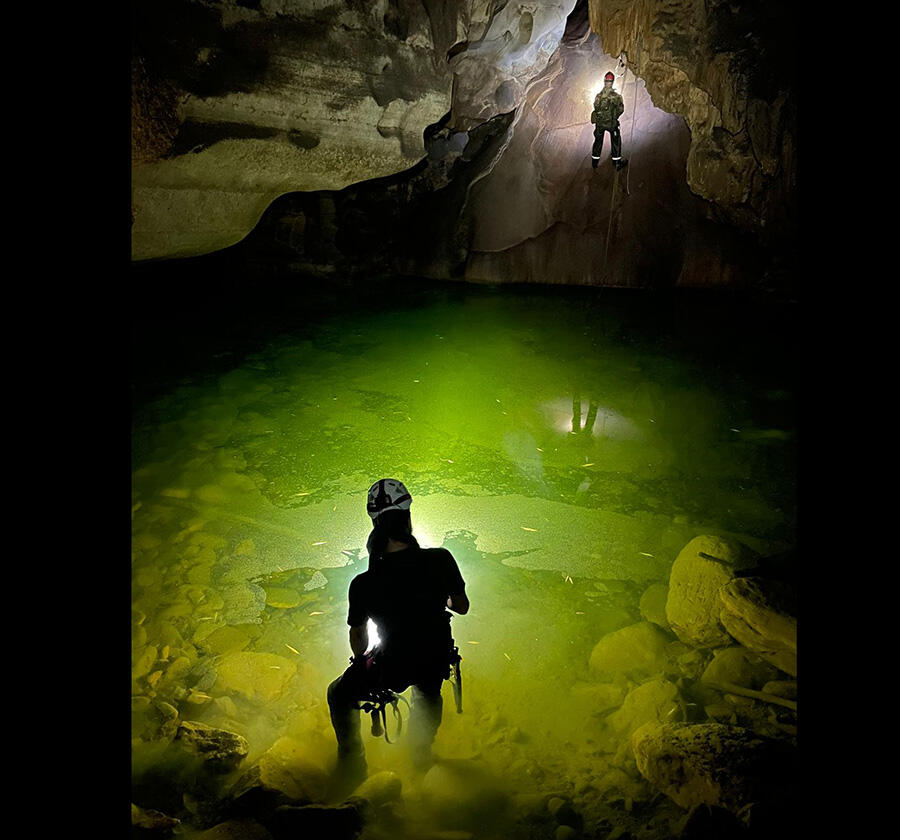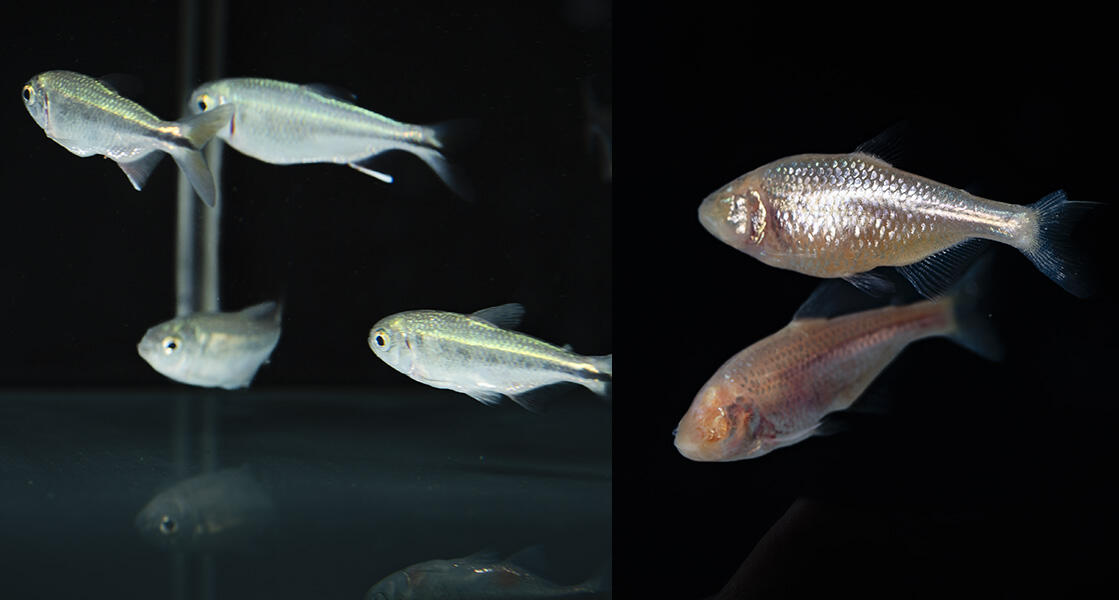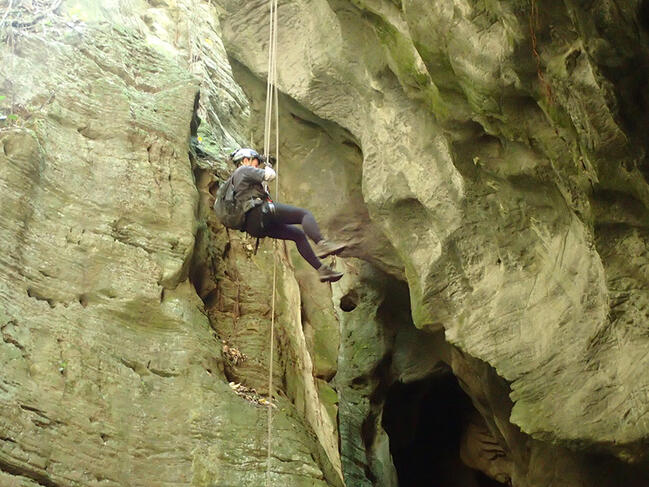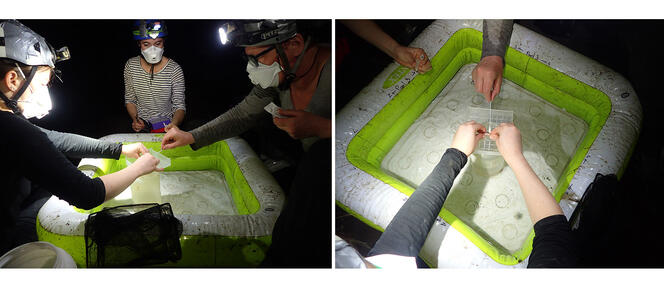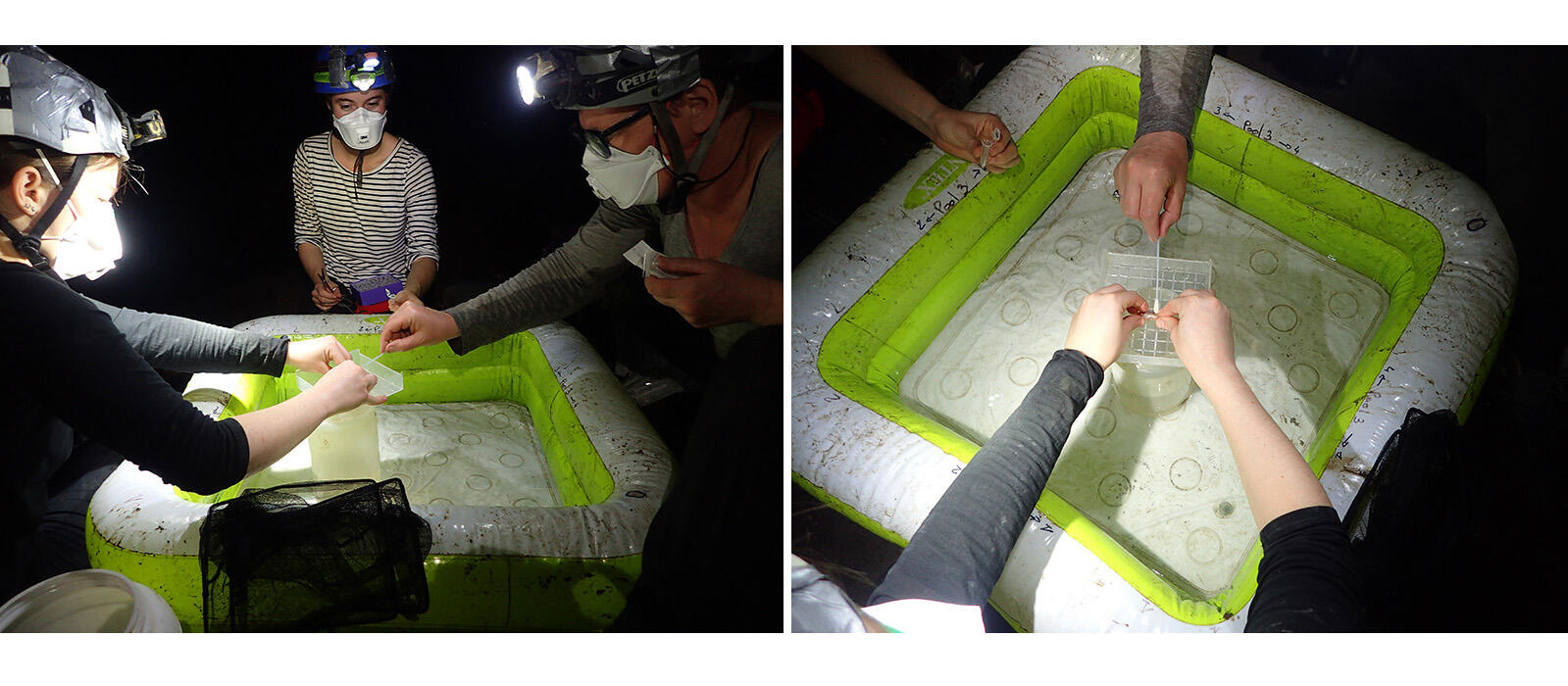You are here
Sylvie Rétaux, the all-terrain biologist

Astyanax mexicanus. This is the name of the animal that has become an obsession for the evolutionary neurobiologist Sylvie Rétaux, a research professor at the Paris-Saclay Institute of Neuroscience (NeuroPSI)1 for nearly 20 years. This small freshwater fish, native to Central America, measures 8 to 9 centimetres in length and looks like a small piranha. Also known as the Mexican tetra, it is now recognised by scientists as an excellent model for studying evolutionary biology, even though it is only investigated by about 100 researchers in the world, including Rétaux, who are able to descend into caves several hundred metres deep in order to observe the creature’s behaviour in its natural habitat.
Discovering Astyanax mexicanus
The first encounter between the researcher and her favourite subject took place in 2004. “At the time, I relied on various models of vertebrates to explain the variations between species in the course of their development and evolution,” she recounts. “We could see significant differences between species at macro-scales by comparing mammals, amphibians or jawless vertebrates (in this case lampreys), but we were unable to prove our hypotheses and evolutionary scenarios.”

Then an American colleague named William Jeffery made a discovery that would send Rétaux’s career in a new direction. He showed that a modification of the expression of the Sonic hedgehog gene, which plays a key role in the regulation of vertebrate organ formation, especially the configuration of the brain, was the source of morphological changes in Astyanax mexicanus. “This meant that we had a living model of micro-evolution, in the flesh, for testing our hypotheses,” Rétaux explains.
In 2009 she had an opportunity to join a small expedition of congress attendees to a cave in the central Mexican state of San Luis Potosí, where they could see the animal in its natural environment. “I had never been in a cave before,” she says. “It was like a rite of initiation. Seeing the fish alive in its native habitat gave real meaning to my research in the laboratory.”
Astyanax mexicanus attracted so much attention from the scientific community that it is now protected by conservation measures in Mexico. How did this little fish, in just one decade, become such a focal point for research in evolutionary biology? Its appeal lies in the fact that the species exists in two physical forms, or “morphs”: an ordinary fish that swims in rivers, and a cave-dwelling fish, blind and depigmented, that has adapted to life in total and permanent darkness. “The Astyanax mexicanus in the rivers is silvery and pigmented, with a long black stripe along its flank,” Rétaux reports. “It has social behaviour, is very aggressive, and fits into a hierarchy within its shoal. In its common form, this fish is endemic.”

The cave-dwelling morph of the same species, which lives in underwater caves in the San Luis Potosí region, is nearly its opposite. “The adults are blind and depigmented, swim in isolation rather than in shoals, show no aggressivity and sleep very little,” the researcher notes. However, this radical behavioural change between two morphs of the same species took place in a span of only 20,000 years – the blink of an eye on the evolutionary scale, making Astyanax mexicanus a gold mine for evolutionary biologists. It’s the cave-dwelling variety, of which there are only a few thousand specimens in all, that Rétaux observes in the field.
From the lab to the caves
The singular nature of her subject has made Sylvie Rétaux not only a recognised specialist in her field, but also an intrepid adventurer. “Most researchers who investigate behaviour limit their work to the laboratory,” comments François Rouyer, her unit director. “It’s usually quite far removed from natural conditions, which poses the risk of observing artificial activity. Sylvie, on the other hand, takes the idea of studying behaviour in natural environments to the extreme. It’s not easy to strike a judicious balance between laboratory and field experience: you need undaunted determination and a tremendous capacity for organisation.”
“We each contribute our skills to the missions, but Sylvie is our leader,” reports Laurent Legendre, a biological engineer at the EGCE laboratory2 and one of Rétaux’s expedition companions for the past ten years. “She has the capacity to see everyone’s strong points and put them to good use. She knows where she’s going, what she wants and how to keep the project in the right direction. And she has an excellent ability to adapt.”
These explorations provide precious, unique data, sometimes leading to unexpected discoveries. For example, it has been shown that wild cavefish develop and grow at the same rate as river fish, which contradicts the dogmatic notion that the underground environment lacks trophic resources, imposing a starvation diet on its inhabitants. Behavioural responses to olfactory stimuli are also very different among animals that live in caves with abundant food resources and those that populate more barren environments. Lastly, these fish, which communicate with one another through sounds that they emit, do not have the same “accent” or acoustic signature in different caves – rather like a native of Marseille (southeastern France) compared with someone from Lille (northern France).
“Astyanax mexicanus sums up the toolbox of developmental evolution,” Rétaux says. “It can help us better understand the evolution of certain neurosensory systems – for example, why some animals have a highly developed sense of smell, like dogs and hammerhead sharks, while others do not.” In the laboratory, her team has shown that while the river variety of Astyanax mexicanus can detect amino acids at concentrations of 10-4 mol/L, its cave-dwelling counterpart has a sense of smell ten times as sensitive: it can perceive odours at concentrations of 10-9 mol/L – as acute as the hammerhead shark, which can detect a drop of blood in the ocean.
Hours of underground exploration and observation
With each expedition, Rétaux and her team explore a new cave among the 30 or so where the fish is known to live. The scientists in the group limit their activity to observation, never catching the fish or engaging in invasive sample-taking. On the other hand, they sometimes leave their equipment on site for up to a year. “Once we’re there, we go underground for eight to twelve hours without coming back up to the surface,” Rétaux explains. “We have no way of communicating with the outside world. We wear masks to protect ourselves from diseases like histoplasmosis, which is caused by a fungus found in large quantities in caves. Breathing its spores can cause severe respiratory problems.” And despite careful preparation, things rarely go as planned: “Sometimes the water level is too low to make audio recordings, and on occasions we have to swim to set up the equipment, often wading through muck. At first I knew nothing about speleology, but I had to get into it!” the researcher says with a laugh.
In addition to its fundamental value, the biologist’s research could also have repercussions in biomedicine, helping to elucidate phenomena like retinal degeneration. Currently, only 30% of the genetic causes of this disorder in humans have been identified. In cave-dwelling fish, the eye begins to form but lacks the ventral part of the retina. Astyanax mexicanus embryos could be used to model the development of coloboma, a retinal malformation that affects one in every 100,000 people. The eye of a Mexican tetra forms in just 24 hours, making it possible to observe the development of the organ in vivo – a scientific achievement that would be unimaginable with human embryos. “We are only beginning to understand that the formation and evolution of organs begins at fertilisation,” Rétaux concludes. “For example, the molecular composition of surface fish oocytes is very different from that of cave-dwelling fish. Our discoveries in this field are only just starting.” ♦



